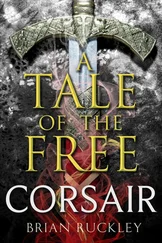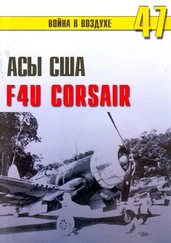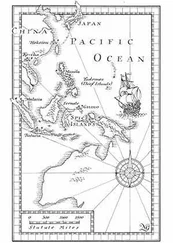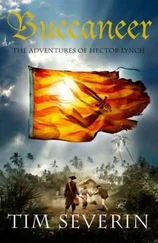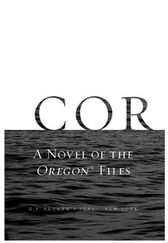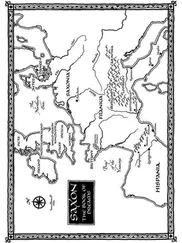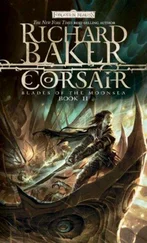There was a pause, and Hector’s hopes rose very slightly as Maimaran said slowly, ‘A name like that is vaguely familiar. I seem to remember hearing it in relation to the emperor’s finances, but I cannot remember exactly where. However . . .’ Then he reached towards his pile of ledgers and selecting a volume began to turn the pages, before he continued, ‘This should tell me.’
Hector watched the old man fastidiously read down the columns until Maimaran gave a little satisfied grunt and said, ‘I thought so. Here it is. A substantial payment in the name of Tison. The money was paid two years ago.’
‘Was it for weapons? For gunpowder?’ Hector asked eagerly. ‘Sean Allen said that Hakim Reis obtained these materials from Tison or Tisonne. Does the ledger give any details who he is or where he might be found?’
‘I’m sorry to disappoint you, young man,’ said Maimaran, looking up from the page, ‘but this entry is nothing to do with guns or smuggling. It relates to a horse, and if you want to find out more about it you need to go to the royal stables.’
NINETEEN

‘A HORSE!’ Diaz wiped his mouth with the back of his hand as he set down his drink. Hector had waited for the Spanish cavalryman’s next visit to Sean Allen’s office to ask his help in solving the mystery of the entry for Tison in Maimaran’s account books. ‘I wonder what the old Jew was referring to. I can’t think what he meant.’
‘You’ve never heard of Tison or Tisonne yourself?’ Hector enquired.
‘Yes, of course. Every Spaniard has,’ Diaz replied cheerfully and, reaching down, picked up his sword and slapped it on the table. ‘This is a tison , though in Castile we pronounce it tizon . It’s a word for a sword, and celebrates one of the most famous weapons in our history. Our greatest hero, El Cid, possessed two swords; one was called Tizon, the other Colada. Every schoolboy is made to learn the poem of El Cid by heart. Even now I can still remember the line,’ and he flung out an arm dramatically as he recited. ‘Well worth a thousand golden marks was the great sword Tizon.’
‘What did El Cid do with his sword?’
Diaz looked at Hector in astonishment. ‘You don’t know the story of El Cid?’
‘No.’
‘Six hundred years ago he helped drive back the Moors and used Tizon and Colada to do the job. According to legend, each sword was half as long again as the span of a man’s arms, and its blade so broad and heavy that only El Cid could wield it in battle.’
‘Then it seems strange to find a “tizon” in the stables of a devout Muslim prince. You would have thought it more likely that the great sword was kept here in the armoury or on display somewhere in Moulay’s palace. Only yesterday Maimaran showed me various trophies that Moulay has put on show to celebrate his victories over the Christians.’
Diaz grimaced. ‘Probably looted them from Spanish towns he captured in the north. Still, the only way to solve the puzzle is by going to the stables themselves. If Sean can spare you, we can set out right now. Just as soon as I finish this drink.’

DOZENS OF GROOMS and ostlers were busy bedding down the horses for the night when Diaz and Hector arrived at the stables. The air was heavy with pungent stable smells, squads of slaves were spreading fresh straw and carrying buckets of water to replenish drinking troughs, and Hector could hear the stamping of hooves and the snuffling of the animals as they waited hopefully for an evening feed. Diaz led him straight to meet the stable master, a small wizened Moor who must have been at least seventy years old and walked with a heavy limp which was the result, according to Diaz, of a riding accident. ‘Haddu is from one of the desert tribes who are great horse handlers and breeders. He has been here since the first day Moulay began building his stables. Recently Moulay wanted to make him a kaid, a nobleman, as a reward for his services. But Haddu refused. He told the Emperor that he didn’t want to be a kaid. Moulay was about to get very angry at being snubbed – you could see his eyes going red – but then Haddu added that he preferred horses to men and, as you know, Moulay likes his cats better than his servants, so he merely laughed and turned away.’
Unfortunately for Hector and Diaz, the stable master found it difficult to understand exactly what his visitors wanted. Hector and Diaz took it in turns to try to explain, but they had no success. Haddu looked from one to the other, increasingly puzzled. ‘Tison? Tizon? Tisonne?’ Hector repeated, trying every pronunciation he could think of. ‘The Emperor’s treasurer told me that he found the word Tison written in his ledgers, and it was something to do with a horse.’
‘I know nothing about any Tison,’ said the stable master, ‘but everything to do with the royal horses will be found in the section of the stables reserved for the Emperor’s animals. If we look there, perhaps you will discover your answer.’
The three men walked across to the imperial stable block that Hector remembered from his previous visit. There Haddu led them between the long lines of open stalls. The animals peered at them curiously, their ears pricked forward, heads turning to follow the progress of their visitors. Haddu stopped often to stroke a nose or scratch between a horse’s ears. He knew the name and breeding of every animal, and all the while he delivered a running commentary about the creature’s history and character. This horse came from the amazigh, the next was a present from the Caliph in Egypt, another was very elderly and stiff in the joints now but had been to Mecca and was sacred. Eventually they came to the last section of the stalls which, Haddu explained, was where the Emperor’s own riding animals were stabled. These horses were kept exercised and fit, ready for Moulay to ride in procession and state occasions. Hector and Diaz looked at each one and complimented the stable master on the good condition of the animals. It was when they had reached the very last animal in the line that Diaz stopped dead, and then slapped his forehead and gave a cry of triumph. ‘What an idiot I am,’ he exclaimed. ‘This is what Maimaran must have meant.’ Turning to the stable master, he asked, ‘How long have you had this horse here?’
‘Some two years. It is a most unusual animal, one of the Emperor’s particular favourites. He would have had to pay a great deal of money for it because such horses occur very infrequently. This one has proved not only beautiful but easy to train. It is truly a gem.’
Diaz looked across at Hector. ‘All that talk of El Cid’s great sword distracted me. The clerk who wrote up that ledger Maimaran showed you didn’t know very much about horses. He put down “tison” when, more correctly, he should have written “tiznado”. The two words are both to do with the ashes or embers in a fire. Do you remember that evening when we watched the fantasia? Moulay himself was riding the three lead horses in the main squadron. He put on a great display, and I remember one of my colleagues, another cavalryman, spoke admiringly of the tiznado. I didn’t know what he was talking about, and he explained that it was a word used in the Spanish colonies to describe a horse of a particular colour. This is just such a horse, a rarity, come and see for yourself.’
Hector went up to the stall. He found himself face to face with a handsome stallion who looked back at him, head held high, an intelligent gleam in its eye. The creature was strongly built with a powerful chest and a short back, clean legs and neat small hooves. Every line of its body told of speed and stamina. But what was truly eye-catching was the creature’s coat. It had been brushed until it shone. The background colour was a pale grey, and scattered over it were dozens and dozens of small black spots. It was the horse that Moulay Ismail had been riding at the fantasia.
Читать дальше



